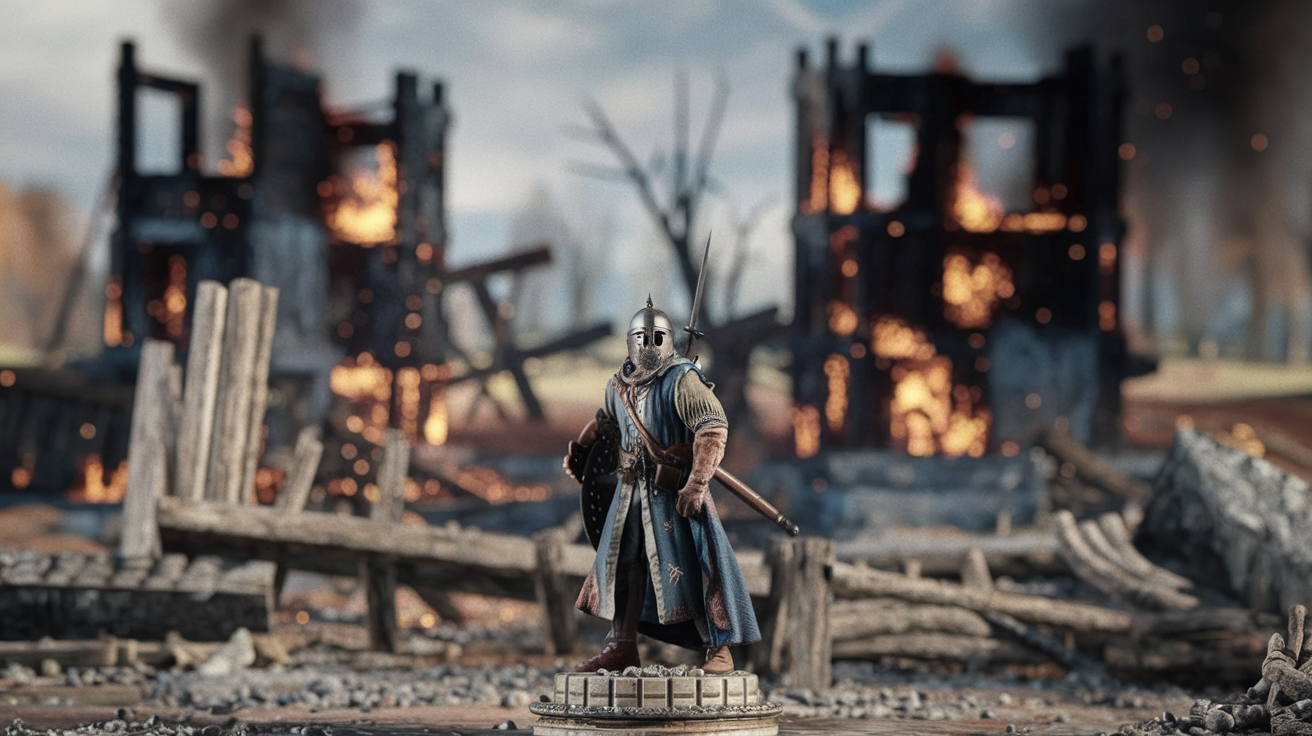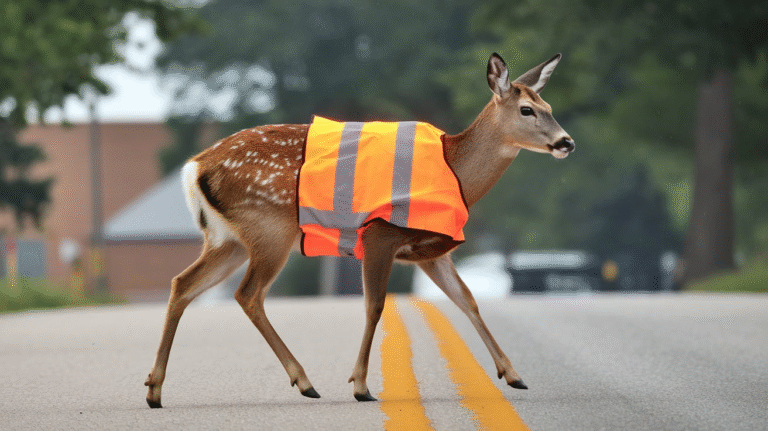The Thirty Years’ War, a catastrophic conflict that lasted from 1618 to 1648, reshaped Europe in unimaginable ways. It began as a struggle between Protestants and Catholics in the Holy Roman Empire but quickly expanded into a series of battles involving most of the great powers of Europe. The war brought widespread destruction, loss of life, and social upheaval. It’s often seen as one of the first examples of what we now call “total war,” where civilians were as affected by the violence as soldiers. As this war unfolded, it introduced new tactics, technologies, and strategies that influenced warfare for centuries to come.
During the Thirty Years’ War, massive armies fought brutal battles, and cities and villages were left in ruins. The war wasn’t just about soldiers fighting on the battlefield—it also deeply affected the lives of ordinary people. Disease, famine, and the pillaging of towns took a far greater toll than the fighting itself. Mercenary armies, often without loyalty or restraint, wreaked havoc on local populations. In many places, people were forced to flee their homes, leaving their lands abandoned and their futures uncertain. The war’s impact on European society was so profound that it is still studied today to understand how conflict can change the course of history.
Understanding the Thirty Years’ War: A Fight for Survival
The Thirty Years’ War was not just a war between armies, but a fight for survival. It began in 1618 as a religious conflict between Protestants and Catholics in the Holy Roman Empire. However, it quickly turned into a wider European struggle. As the war dragged on, entire populations were caught in the chaos, struggling to survive. Villages were destroyed, crops were ruined, and many people were forced to leave their homes. The war lasted for three decades, causing extreme hardship for the people living in Europe. The struggle wasn’t just about military victories; it was also about surviving the challenges of famine, disease, and constant violence. The war’s impact was felt across the continent, affecting people from all walks of life.
How the Thirty Years’ War Changed Europe Forever
The Thirty Years’ War completely changed Europe in ways that are still felt today. Before the war, Europe was divided into many religious and political groups. However, after the war, the political landscape of Europe was reshaped. The Peace of Westphalia in 1648 marked the end of the war and introduced new ideas about sovereignty and diplomacy. This agreement set the stage for the modern nation-state system, where countries have more control over their own affairs. The war also had a lasting effect on society, economy, and culture. Many areas of Europe were devastated, and it took generations for countries to recover. The Thirty Years’ War left a deep scar on Europe, but it also set the groundwork for future peace efforts and international relations.
The Devastating Human Toll of the Thirty Years’ War
The Thirty Years’ War took a devastating toll on the human population. Millions of people died during the conflict, not just from battle, but also from diseases like typhus and plague. These diseases spread quickly, especially because of the large armies that marched across the continent. The war also caused widespread famine, as crops were destroyed and food became scarce. In some areas, entire communities were wiped out, with as many as 60% of the population dying. The war didn’t just take soldiers’ lives; civilians also suffered greatly. The loss of life during this period is considered one of the highest in European history, and it left many regions in Europe struggling to rebuild for years.
Mercenaries and Mass Destruction: The Key Players of the Thirty Years’ War
Mercenaries played a major role in the Thirty Years’ War, and their actions often led to mass destruction. These soldiers were hired to fight for different sides, but many were motivated by money rather than loyalty. They pillaged villages, destroyed crops, and caused widespread suffering. With little regard for the civilians they encountered, mercenaries were notorious for their cruelty. They would often loot towns and cities, taking what they wanted and leaving destruction in their wake. The use of mercenaries changed the nature of the war, as they created a level of violence and instability that affected not just the battlefield, but also the everyday lives of people.
The Peace of Westphalia: How the Thirty Years’ War Ended a Century of Chaos
The Peace of Westphalia, signed in 1648, marked the end of the Thirty Years’ War and brought an end to a century of religious and political chaos in Europe. This agreement changed the way countries interacted with each other, promoting the idea that each state had the right to control its own territory without outside interference. It also helped to establish a new order of peace that focused on diplomacy rather than war. The Peace of Westphalia played a crucial role in shaping modern international relations, as it laid the groundwork for the development of the nation-state system. It was an important moment in history that helped to restore order after years of destruction.
From Religious Conflict to Total War: What Sparked the Thirty Years’ War?
The Thirty Years’ War started as a religious conflict between Catholics and Protestants in the Holy Roman Empire, but it quickly became a total war. It all began in 1618 when Protestant nobles in Bohemia rebelled against the Catholic King Ferdinand II, leading to the Defenestration of Prague. What followed was a series of battles that drew in multiple European powers, including Spain, Sweden, France, and the Holy Roman Empire. The war grew more complicated as political and territorial disputes were added to the mix. What started as a religious fight soon became a struggle for political power and control, making it one of the first instances of a total war.
How the Thirty Years’ War Set the Stage for Modern Warfare
The Thirty Years’ War is often considered one of the first modern wars because of the way it introduced new tactics and technologies. During this conflict, armies grew larger, and the use of firearms and artillery became more widespread. The war also saw the use of new military strategies, such as siege warfare and the deployment of mercenaries. These changes in military tactics and technology influenced wars that followed, including those in the 18th and 19th centuries. The devastation caused by the war also pushed for the development of new methods of diplomacy and peacekeeping, making it a crucial event in the evolution of modern warfare.
The Role of Disease and Famine in the Thirty Years’ War
While the battles of the Thirty Years’ War were deadly, the true devastation came from the disease and famine that followed. Large armies and the displacement of people led to the spread of deadly diseases like typhus and plague. These diseases killed more people than the actual fighting did. Famine also became widespread, as fields were abandoned and food production was disrupted. Entire populations were wiped out by disease, and many areas in Europe experienced severe shortages of food. The consequences of disease and famine were felt long after the war ended, as they contributed to the decline in population and economic collapse in many regions.
The Legacy of the Thirty Years’ War: A New World Order
The legacy of the Thirty Years’ War is still felt in modern Europe and the world today. The war ended with the Peace of Westphalia, which laid the foundation for the modern state system. It introduced the concept of national sovereignty, which gave countries more control over their own affairs. This new political order helped shape the way countries interact with each other and led to the development of international diplomacy. The war also had lasting effects on European society, as it destroyed economies, displaced populations, and changed the social fabric of many nations. The Thirty Years’ War remains a key event in the history of Europe.
What We Can Learn from the Thirty Years’ War in Today’s Conflicts
Looking at the Thirty Years’ War, we can learn valuable lessons for dealing with today’s conflicts. One of the main lessons is how long, drawn-out wars can destroy a country, not just in terms of military losses but through the effects on civilians. The war shows how diseases, famine, and mass displacement can have lasting consequences on society. It also reminds us of the importance of diplomacy and negotiations in ending conflicts. In today’s world, where wars can also last for many years, the lessons from the Thirty Years’ War help us understand the importance of finding peaceful solutions to prevent the destruction of both lives and societies.
Conclusion
The Thirty Years’ War was a significant event in European history that shaped the world we live in today. It was not only a conflict over religion but also a fight for power and control that involved many countries. The devastation caused by the war had far-reaching consequences, from widespread death to long-lasting social and political changes. This war showed us the dangers of prolonged conflict and the impact it has on civilians, which is still relevant to modern conflicts.
Even though the war ended centuries ago, the lessons from the Thirty Years’ War are still relevant today. The idea of national sovereignty and diplomacy that came from the Peace of Westphalia continues to shape international relations. Understanding this war helps us see the importance of peace, negotiations, and protecting civilians during conflicts. The Thirty Years’ War is a reminder of how destructive war can be, and how essential it is to work toward lasting peace.
FAQs
Q: What started the Thirty Years’ War?
A: The Thirty Years’ War started as a religious conflict between Protestants and Catholics in the Holy Roman Empire.
Q: How long did the Thirty Years’ War last?
A: The Thirty Years’ War lasted for 30 years, from 1618 to 1648.
Q: What was the Peace of Westphalia?
A: The Peace of Westphalia, signed in 1648, ended the Thirty Years’ War and introduced new concepts of sovereignty and diplomacy.
Q: How many people died during the Thirty Years’ War?
A: The war resulted in an estimated 4 to 12 million deaths, mostly due to disease and famine.
Q: What impact did mercenaries have during the Thirty Years’ War?
A: Mercenaries were responsible for much of the destruction, looting, and brutality during the war, as they were mainly driven by money.












